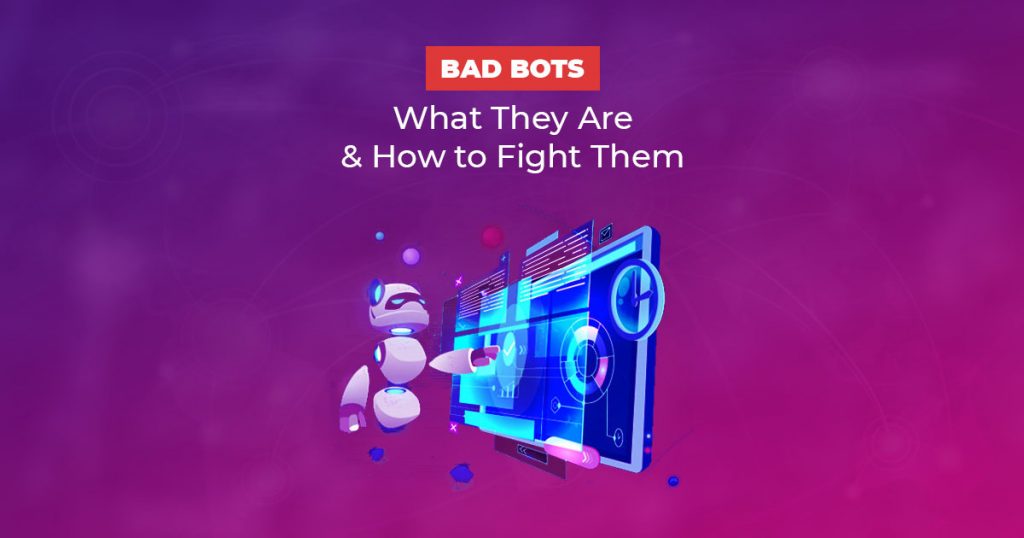Bad bots traffic rose by 18.1% in 2019, and it currently represents about one-fourth of all web traffic.
The inescapability of bad bots not only places extra stress on organizations and prompts additional infrastructure costs. Likewise, it demonstrates uncontrolled cyber-attacks, and noxious exercises carried out by cybercriminals and threat groups.
Imperva’s report even uncovers concerning patterns, such as endeavors to rebrand bad bots as authentic administrations, the growth of monstrous credential stuffing assaults being done by pernicious actors utilizing bots, and the expanding multifaceted nature of bot activities. Thinking about these turns of events, it’s just judicious to comprehend bad bots and battle them.
What Are Internet Bots?
More simply, web bots are programming applications that are intended to robotize numerous dreary and mundane tasks on the web. They’ve become an essential part of what matters to the web and are utilized by multiple web applications and tools.
For instance, web search engines such as Google rely on bots that creep through web content to index data. Bots pass through many pages’ content to discover and index terms that these pages contain. So, when a client looks for a specific time, the search engine will know which pages have that particular data.
Let’s hash it out in a simple way
How Are They Used?
Think the opposite of something done by bad bots. Travel aggregators use bots to ceaselessly check and accumulate data on flight subtleties and lodging availabilities with the goal that they can show the most updated data for clients. This implies clients no longer need to check various sites one by one. The aggregators’ bots combine the entirety of the data, permitting the administration to show the information simultaneously. This is complimentary use of bots in contrast with bad bots.
On account of improvements in artificial intelligence and machine learning, bots are likewise utilized to carry out more perplex tasks. Business intelligence uses bots to slither through product reviews and online media remarks to give experiences on how the public perceives a specific brand.
How Bots Can Positively (and Negatively) Impact Your Organization
Envision if these assignments were done physically by a human. It would be a slow and mistake-prone procedure. By utilizing bots, these assignments are finished rapidly, and all the more precisely. This releases up your company’s “human resources” to work together and focus on more imperative undertakings and objectives.
Bots affect the framework of sites and applications they come into contact with. Since bots basically “visit” sites, they devour computing resources, such as worker burdens and transmission capacity. Along these lines, even these great bots can incidentally cause harm. A forceful web crawler or aggregator bot can bring down a webpage with limited resources. Luckily, a legitimate site setup can keep this from occurring.
What Are Bad Bots?
When all is said in done, bot activity is now something that most organizations have been managing for quite a long time. Notwithstanding, what’s troubling is the traffic originating from the “bad bots” — the bots that have been appropriated by malignant actors to fill in as instruments for different hacking and scam crusades.
By and large, bot movement is, as of now, something that most companies have been managing for quite a long time. In any case, what’s troubling is the traffic that originates from the “bad bots” — the bots that have been appropriated by noxious entertainers to fill in as apparatuses for different hacking and extortion crusades.
The most widely recognized utilization for awful bots include
Web scraping — Hackers can take web content by slithering sites and duplicating their exclusive content. Phony or fake locales can utilize the stolen content to seem real and track visitors on the site.
Data mining — Aside from taking whole sites’ content, bots are additionally used to reap explicit information, such as individual, financial, and contact data that can be discovered on the web.
Price scraping — Product costs can likewise be scratched from internet business sites with the goal that they can be utilized by organizations to undermine their enemies.
Brute-force logins and credential stuffing — Malicious bots collaborate with pages containing login in structures and endeavor to access locales by evaluating diverse username and password.
Digital advertisement scam — Hackers can game pay-per-click (PPP) promoting frameworks by utilizing bots to “click” on an ad on a page. Deceitful site proprietors can win from these fake snaps.
Spam — Bot can likewise naturally cooperate with structures and fastens on sites and social media pages to leave fake remarks or bogus product audits.
Distributed denial of service attacks — malicious bots can be utilized to overpower an organization or worker with immense traffic safety measures. When the designated assets are being used, sites and applications hosted or facilitated by the network will get unavailable to genuine clients.
Cyber criminals are additionally getting more complex and more creative to utilize these bots. First, they’re planning bots that are fit for dodging ordinary bot mitigation arrangements, making them harder to identify. Some venturesome parties even make legitimate services out of bad bots. Bots can be utilized to assist purchasers with advancing beyond queues in time-sensitive exchanges, for example, purchasing restricted items or event tickets. For more details please contact us.

